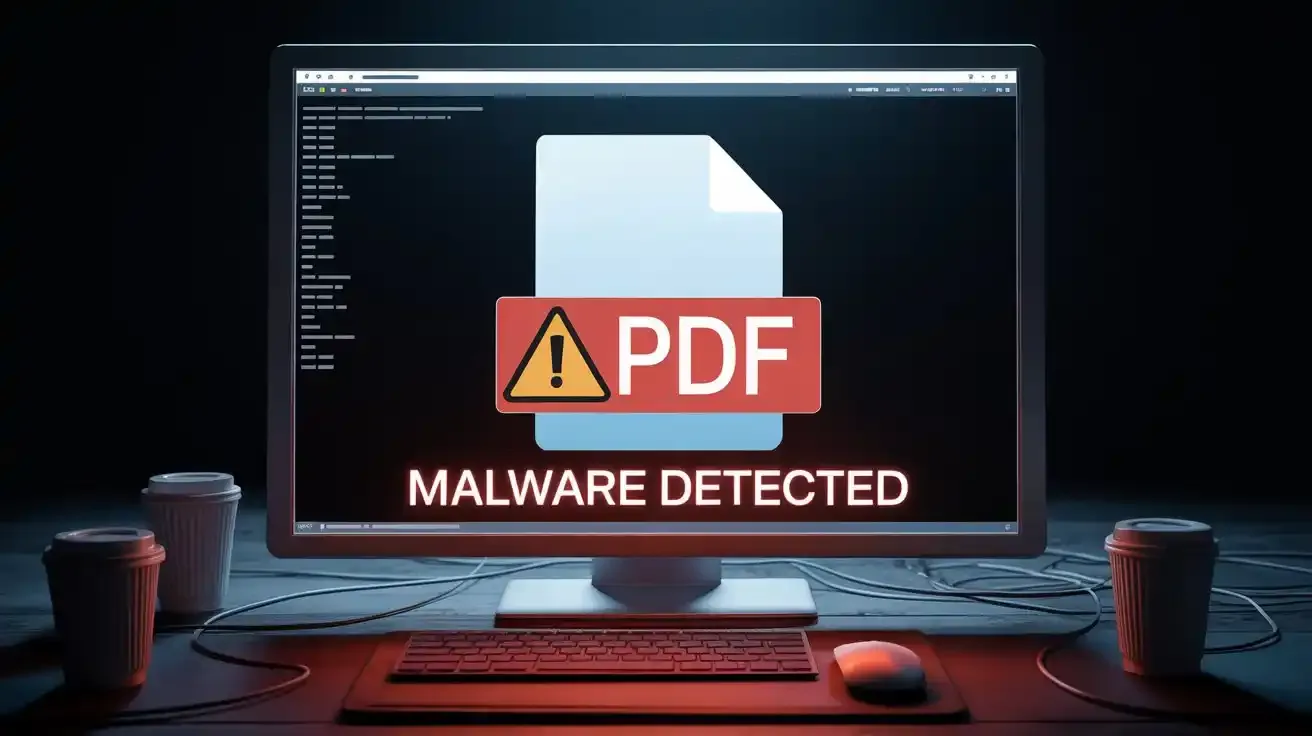
It started with a seemingly mundane invoice attachment. Clean filename, nothing unusual in the headers. Yet when it hit the inbox of a colleague at a partner firm, chaos followed—machines froze, files were encrypted, and ransom notes flooded in.
The payload? A single, weaponized PDF. This incident revealed that traditional email filters were fighting yesterday’s war.
PDFs have become the perfect carrier. They blend into daily business operations, remain readable on every device, and aren’t scrutinized like .exe or .js files. Filters rely on heuristics and static signatures, but modern attackers disguise malicious code beneath obfuscated layers, encrypted blobs, or scripts triggered only in rare reader environments.
That sophistication slips past filters, banking on reputation scores and keyword scanning, as seen in recent scams like the USPS phishing scheme hiding malicious PDF links that leveraged everyday familiarity to bypass detection.
Anatomy of a Filter-Evading Phish
One dissected PDF appeared to be a legitimate invoice from a vendor, complete with logos and itemized charges. But one tiny icon—a clickable signature box—hid a base64-encoded JavaScript snippet.
The script is activated only in outdated versions of PDF viewers with scripting enabled. No obvious network calls, no suspicious API hooks. It was digital stealth.
The most insidious part? The PDF passed every virus scan. Even sandbox detonation returned a green light—because the trigger relied on human interaction: clicking a fake approval box.
Once activated, the script opened a shell that fetched the true payload via steganographically hidden links embedded in vector image data. At that point, it was game over—mirroring what security researchers later detailed in a stealth Windows MSHTML zero-day chain that bypassed traditional defenses using similar obfuscation techniques.
Heuristics Can’t Catch What They Can’t See
Even advanced Secure Email Gateways (SEGs) struggle here. They look for known threats, common exploit kits, or suspicious macros. But if an attacker writes custom code and buries it inside shapes, fonts, or compression streams that decompress only under specific view conditions, visibility breaks.
The PDF Threat Signature No One Talks About
Months of forensic investigation revealed a consistent three-byte pattern near the object streams in suspicious PDFs. It wasn’t part of any official spec, but consistently flagged files that were later confirmed as malicious.
Think of it as a digital fingerprint that attackers didn’t know they were leaving behind, much like those found in the Operation Aurora PDF zero-day hack that blended into legitimate-looking files.
This marker, shared with a few contacts running YARA scans across corporate archives, returned immediate hits on previously cleared files. The pattern emerged from a popular builder kit circulating in underground forums. No VirusTotal signature had caught it yet, but a single YARA rule created a powerful early-warning system.
Writing the YARA Rule
The YARA snippet was elegant:
rule PDF_Malware_Marker {
meta:
description = "Detects suspicious PDF object stream marker"
strings:
$marker = { 0A B7 4D }
condition:
$marker
}One line of hex, one condition—and a thousand false negatives eliminated.
Building a Pre-Click Quarantine Protocol
Detection is only half the battle. Prevention demands speed. A lightweight response script was developed to watch for YARA hits in mail gateways and instantly isolate the recipient’s account and machine. Before the user even opens Outlook, access is locked, and the PDF is flagged for forensic review.
This flow stops lateral movement, alerts the SOC, and buys crucial minutes before damage spreads. Built on open-source modules, the policy logic was tuned to minimize disruption: only PDFs with the byte marker and embedded JavaScript are flagged. False positives? Two in six months, even as campaigns like the Autodesk Drive PDF phishing attacks slipped past SEG filters by hiding payloads in cloud-hosted links.
An Online PDF Studio: A Preferred Sandbox
To dissect these threats safely, an online PDF studio offers an ideal environment. It provides raw object visibility, layer control, and zero tolerance for auto-execution—without triggering payloads.
Unlike bloated commercial suites, it puts the analyst in full control. For scenarios that demand a reliable PDF editor for Windows with precise behavior analysis capabilities, this tool provides a controlled and consistent examination layer.
Proof of Concept: Sandboxed Simulation
To validate the method, a simulation was conducted using a dummy PDF with the same obfuscation stack. Three top-tier SEG filters cleared it. The YARA-enhanced gateway flagged it immediately.
Opening the file in the online PDF studio revealed no auto-loads. The object tree showed the malicious stream by its byte marker. The response script quarantined the machine in under five seconds.
From Inbox to Insight
This process was tested end-to-end using live tools—no custom hardware, no enterprise lock-in. The only requirement was a thorough understanding of attacker blind spots and a commitment to reversing their playbook.
Final Word: Scale Without Sacrificing Speed
Many teams either over-engineer their defenses or place too much trust in their SEG. Neither approach is effective. Scalable, tool-agnostic workflows that act before users do are essential. The YARA rule alone uncovered threats hidden in files from Fortune 100 companies.
Tools like an online PDF studio, free of marketing bloat and proprietary constraints, integrate smoothly into existing SOC pipelines. Whether managing a lean startup or a global response team, these methods scale. This is how the PDF phish flood was shut down—and how others can do the same.